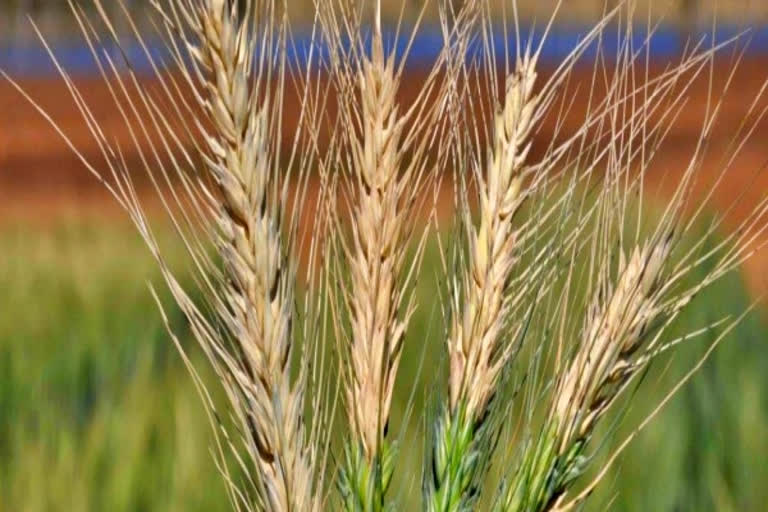Kolkata: In order to prevent the spread of deadly wheat blast disease, the Union government, in 2017, imposed a blanket ban on the production of wheat in large areas along the international border with Bangladesh in Murshidabad and Nadia districts of West Bengal. It was decided that wheat could not be cultivated within a radius of 5 kilometres from the border for three years in these two districts.
The state government enforced the same ban in the area. Over 8,000 acres of farmland in Murshidabad and Nadia districts came under the ban.
The period of that ban has expired. But even now the state agriculture department is not in favour of resuming wheat cultivation in the area. Even agronomists are against this.
According to a high-ranking official of the state agriculture department, if wheat cultivation resumes now, the incidence of wheat blast disease might increase again. "Informal exchange of seeds between Indian and Bangladeshi farmers is taking place freely in Murshidabad and Nadia districts, both being adjacent to the international border. We all know that the fungus responsible for the outbreak of this deadly wheat blast disease has its source in Bangladesh, which had gradually spread to the entire continent of Asia. So we don't want to allow wheat cultivation in the area again until I can ensure that this seed exchange is stopped, ”the official said.
Cattle crossing the border on both sides also act as carriers of the disease. Wheat blast disease is caused by the fungus and these fungi can travel easily through cattle.
The first outbreak of wheat blast disease was reported in Brazil in 1975, and in that same year, the disease destroyed almost the entire wheat production in that country.
In 2016, the fungus entered Asia through Bangladesh and in that year about 20,000 hectares of land in six districts of Bangladesh had to be burnt.
Also read: India to construct Shahtoot Dam in Afghanistan: MEA
Bangladesh shares a 4,096 kilometre border with India, of which 2,227 kilometres is with West Bengal.
Repeated attempts by ETV Bharat to contact West Bengal agriculture minister, Ashish Banerjee failed as his mobile phone kept on ringing.
Amiya Patra, the leader of the All India Krishak Sabha, said that the blast disease had affected wheat cultivation in the state. "Wheat cultivation was banned in 1,91,000 hectares of land along the Bangladesh border across the state. If cultivation is banned again, the wheat crisis will increase. The state government should increase wheat cultivation in alternative ways. Otherwise, production will be hampered," he said.
Tapas Roy, an agronomist, said that the deadly disease in Latin America had once entered the state. "Wheat blast is the biggest problem of the agriculture department in the state.
The problem is severe in Nadia, Murshidabad and the Indo-Bangladesh border areas of the state. Therefore, the state agriculture department has made arrangements to cultivate pulses or oilseeds instead of wheat," he said.
According to him, this deadly disease called Light Disease had never existed in Asia before. "The disease had long been present in other Latin American countries, including Brazil. This disease has recently come to Bangladesh. Wheat crops produced in over 8,000 hectares of land in Nadia and Murshidabad had to be burnt down,” he said.



